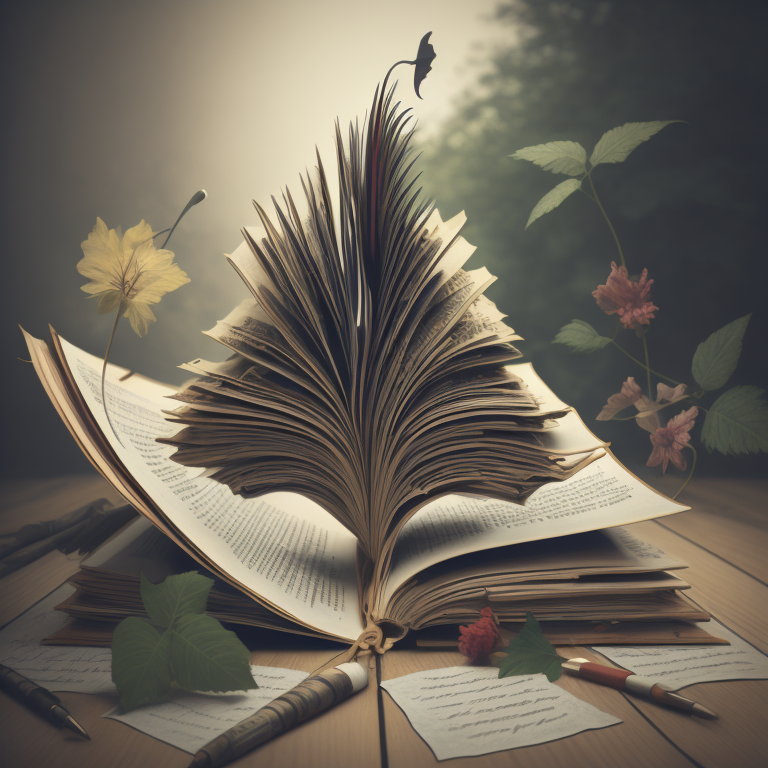Poetry is a beautiful and expressive form of literature that has been cherished and celebrated for centuries. It allows us to convey our deepest emotions, thoughts, and experiences through carefully crafted words and rhythmic patterns. Throughout history, poets have experimented with various forms and structures, resulting in a wide range of poetic styles.
When it comes to poetry, there is a vast array of styles and forms that poets can choose from. Each type of poem has its own unique characteristics and structure, allowing poets to express their thoughts and emotions in various ways.
Limerick
Limericks are light-hearted and humorous poems consisting of five lines. They follow a specific rhyme scheme (AABBA) and often feature witty and playful content. They are known for their catchy rhythm and are commonly used to tell funny stories or jokes.
Acrostic
An acrostic poem is a unique form of poetry where the first letter of each line when read vertically, spells out a word or phrase. It allows poets to convey hidden messages or add an extra layer of meaning to their work. Acrostics can be used to express personal thoughts or pay tribute to someone or something.
Epitaph
Epitaphs are short poems that are often inscribed on tombstones or memorials. They serve as a tribute to the deceased and can express sentiments of love, loss, or reflection. Epitaphs are usually concise and poignant, capturing the essence of a person’s life in a few lines.
Ekphrastic
Ekphrastic poetry is a type of poem inspired by a piece of visual art, such as a painting or sculpture. It seeks to capture the essence of the artwork and evoke emotions through words. Ekphrastic poems often provide a new perspective or interpretation of visual art, creating a dialogue between the two art forms.
Sonnet
The sonnet is a classic form of poetry that originated in Italy. It consists of 14 lines and follows a strict rhyme scheme and meter. Sonnets often explore themes of love, beauty, and the passage of time. One of the most famous sonnet writers is William Shakespeare, whose sonnets continue to captivate readers to this day.
Haiku
Originating in Japan, the haiku is a concise and contemplative form of poetry. It consists of three lines with a total of 17 syllables, typically arranged in a 5-7-5 syllable pattern. Haikus often focus on capturing a single moment in nature and evoking a sense of tranquility and reflection.
Free Verse
Free verse is a form of poetry that does not adhere to any specific rhyme scheme or meter. It allows poets to have complete creative freedom in terms of structure and rhythm. Free verse poems often emphasize the use of imagery, symbolism, and vivid language to convey emotions and ideas.
Ballad
Ballads are narrative poems that tell a story. They often have a musical quality and were originally meant to be sung or recited. Ballads typically have a regular rhyme scheme and rhythm, making them easy to remember and pass down through oral tradition. Many traditional folk songs are in the form of ballads.
Blank Verse
Blank verse is a form of poetry that consists of unrhymed lines of iambic pentameter. It is often used in epic poems, plays, and dramatic monologues. Blank verse allows for a natural and conversational flow of language while maintaining a sense of rhythm and structure.
Ode
Odes are lyrical poems written to celebrate or praise a person, place, or thing. They often have a formal and elevated tone and are characterized by elaborate and descriptive language. Poets throughout history have written odes to honor subjects such as love, nature, and historical events.
Sestina
The sestina is a complex and challenging form of poetry. It consists of six stanzas of six lines each, followed by a final three-line stanza. The same six end words are repeated in a specific pattern throughout the poem. Sestinas require careful planning and skillful wordplay, making them a favorite among more experienced poets.
Epigram
Epigrams are short and witty poems that often contain a clever or satirical message. They are known for their brevity and conciseness, packing a punch in just a few lines. Poets and writers have used epigrams to convey social commentary, humor, and profound insights.
Concrete Poetry
Concrete poetry, also known as shape poetry, is a form of visual poetry in which the arrangement of words on the page creates a specific shape or image related to the poem’s theme. It combines the use of words and visual elements to enhance the overall meaning and impact of the poem.
These are just a few examples of the many types of poetry. Each form offers its own unique set of challenges and opportunities for self-expression. Whether you prefer the structured elegance of a sonnet or the boundless creativity of free verse, poetry has something to offer for everyone. So, pick up a pen, let your imagination soar, and let your words dance on the page.
